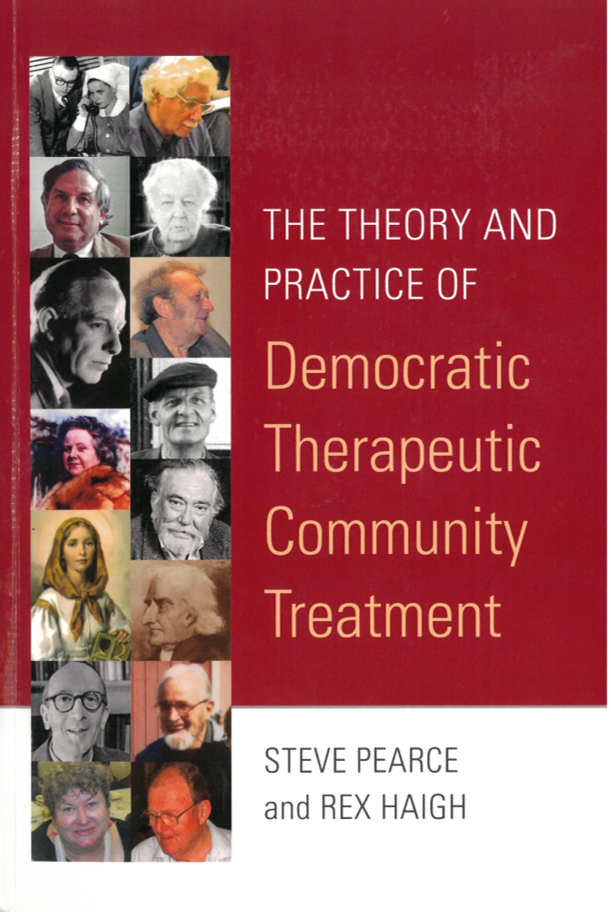“I think when we have people in our therapeutic communities who are more chaotic, with frequent use of emergency services or police. One of the things that really helps them is the containment aspect of the TC – there are clear boundaries and a sense of accountability to one another,” says Dr. Steve Pearce, co-author of the book The Theory and Practice of Democratic Therapeutic Community Treatment, alongside Dr. Rex Haigh.
The TC is a flexible model with three basic principles: promoting personal-agency and a sense of belonging, ensuring everyone has a voice (democracy), and developing mutual concern and accountability for one another.
“We’re not looking after people, and thereby disempowering them or potentially promoting unhealthy dependencies. Rather, we’re helping empower people to find the things that will be good for them,” says Steve.
Originally styled as full-time, live-in communities, the model has been adapted by Rex and Steve to be a visiting day program. TC groups can range from spending five hours a day, three days per week to shorter engagements of a few hours one day a week. These modified TCs co-exist with longer-term, live-in treatment options and help meet the varying needs.
As the time spent in groups was reduced, the authors thought that members who had greater stability in their lives would do better with less time, and those with more difficulties would require more time in the group. To their surprise, the authors report that it’s quite unpredictable.
“There are some people who are very chaotic and very at risk. And one day or even half a day in a TC can be like turning on a light – they suddenly pick themselves up, and they’re up and running,” says Steve.
The authors explained that for some, live-in treatment doesn’t suit them – it can be too intense or too much at once. Shortening the time spent in a TC allows for more flexibility to create a plan that works best for each individual and their needs.
No matter the length of time spent in groups, members create a sense of belonging, safety, and hope – by establishing expectations of how to behave with and learn from each other. The group supports every member’s goals while holding each other accountable.
While the obvious advantage to having shorter TC treatment is the cost savings, the real gain comes with therapy happening alongside real life.
“Real life is incorporated into therapy every day. A member may go home and have a drink, binge, and come back the next morning wanting to talk about it, and they’re able to understand that in its proper context,” says Rex.
On the other hand, Rex notes that, “in a live-in facility, members can be completely isolated in a bubble away from real life, and they don’t have those experiences co-existing with their therapy.”
The principles of belongingness and co-creation can be incorporated into a variety of settings – wherever small groups of people come together regularly. A supportive housing operator once asked the authors how to improve tenant outcomes in terms of reducing self-harm; getting on top of their drug use; and increasing a sense of happiness. Quite often people never get together, and the operator was left wondering why.

“The book isn’t a slavish recipe to follow, but the principles for healthy functioning don’t change. We told the provider to bring people together, assume that they’re responsible for one another, and produce a feeling of belongingness between them. And they did. Gradually the living environment improved. As soon as people feel like they become a part of the relationships around them, they will feel like they have a stake in the fabric of the community. And they start to feel hopeful and that something better is possible,” says Steve.
“The model is really a different way of looking at relationships. Members – including staff – are able to be themselves more, be playful, and have fun with the work. It gives you a different way of relating to others, to create that sense of belongingness and mutual concern for one another, and that’s a big part of what makes it successful,” says Rex.
Learn more about the TC model and keep up to date with discussions, webinars, virtual conferences, and events like the planned 2022 Living Learning Experience in Vancouver – on Streetohome’s TC Community of Practice. Chapter summaries, questions and discussion notes are available for those interested in organizing their own book club. For access, contact [email protected].

